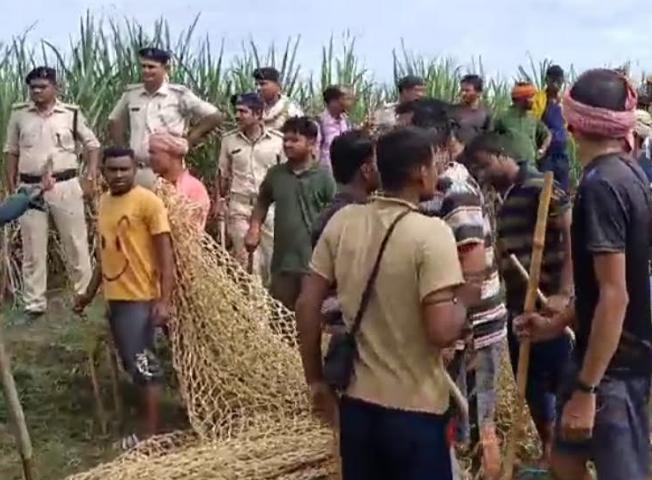Shooting of a tiger in Bihar's only national park, Valmiki Tiger Reserve (VTR), shocked the nation earlier this month.
It was also a cause of concern for the conservationists. This was another case
of increasing man- tiger conflict as more tigers turned “pests” necessitating
their elimination . In the last three years, 125 people have died in the
conflict with the cats. If I put this into perspective in the backdrop of
increasing tiger population but decreasing forest cover and prey base outside
the protected areas,the situation is alarming.
Huge Human Population Pressure on VTR
Also read: Urban Tigers On The Prowl in Bhopal
In all there are 350 villages in the
sensitive zone. Sugar cane harvesting is being practiced on the edge of the
park providing tigers a good hideout. This tiger was also born in
sugarcane fields and was surviving on the village cattle. But in the past few months the
tiger had allegedly killed 10 villagers. But there are many expeerts who believe that all 10 were not killed by the same tiger. There is aother tiger who is killing people. The park authorities however denies this. In February 2021 also, a tiger
was captured after it had killed 3 villagers. The tiger later died in Patna zoo. Many times tigers were also found dead under suspicious circumstances near VTR after
alleged revenge killing by the villagers. The conflict is on the rise.
Himalayan Green Necklace Fragmented
Also read: Rising Tiger Numbers Midst Shrinking Forest Cover Makes No Sense
Nearly 70% of this TAL is
directly used by humans for agriculture and settlement. Over the last two
decades, high population growth, agricultural expansion and changing
socio-economic objectives are the critical challenges for forest management in
this landscape, says the study report .VTR has been subjected to more
anthropogenic stressors including overharvesting, overgrazing, illegal logging
and sand mining. The other parks situated in the region include Jim Corbett and
Rajaji National parks in Uttarakhand, Dudhwa national park,
Katarniaghat and Pilibhit in Uttar Pradesh. There are six national parks
in the same region in the adjoining Nepal and it includes the famous Chitwan
national park. TAL is represented by a green necklace around the foothills of
the Himalaya.
Conflict Zones Galore
Of the 125 human deaths from 2019 to 2021, the maximum deaths -61- occurred in Maharashtra, Union minister of forest, environment and climate change, told Lok Sabha in July 2022. One such conflict zones, Brahmapuri division, is situated on the edge of the famous TadobaAndhari Tiger Reserve (TATR) where 5 lakh people in 750 villages jostled for space with 100 tigers of Chandrapur, known as the tiger capital of Maharashtra. As many as 34 people died and 200 injured in the conflict between 2016 and 2019. Tigers are caught almost on regular basis, caged and dispatched to rescue centres.No one knows about their fate afterwards. Locales in Brahmapuri division are up in arms against the forest department. A senior official of the MoEFC&C said, “Shooting a tiger is always the last thing. We always want to catch the pest tiger as the conflict derails the conservation works.” We seem to have more tigers than the space available in our jungles, comment ae MoEFC&C official.
Also read: Avni's killing: Core Issue of Tiger Corridors Lost in Oblivion
Many times, the tiger shooting is also
challenged in courts .Avni or T1 was shot dead in 2018 after a hunting
operation led by a civilian hunter and forest department in Yavatmal district
of Maharashtra. The tigress had allegedly killed 13 people from 2016 to 2018.
After a petition, the Supreme Court has sought answer from the government
whether the tigress was indeed “man -eater”. Midst rise in tiger population,
tree felling is continuing at a massive scale. More tigers live outside the
protected areas of national parks. Conflict begins when they move out in the
fragmented forests and in the absence of a jungle corridor; they enter farm
fields, like the one on the sugarcane fields on edge of the VTR. The
states with large tiger populations are preparing human tiger conflict
mitigation plans also which is also likely to be released with tiger census
data.
Representaional cover image. Second image shows STF personnel looking to shoot tiger , Tree felling in Himalayan region and the last image shows the conflict zone of VTR





Comments
Post a Comment